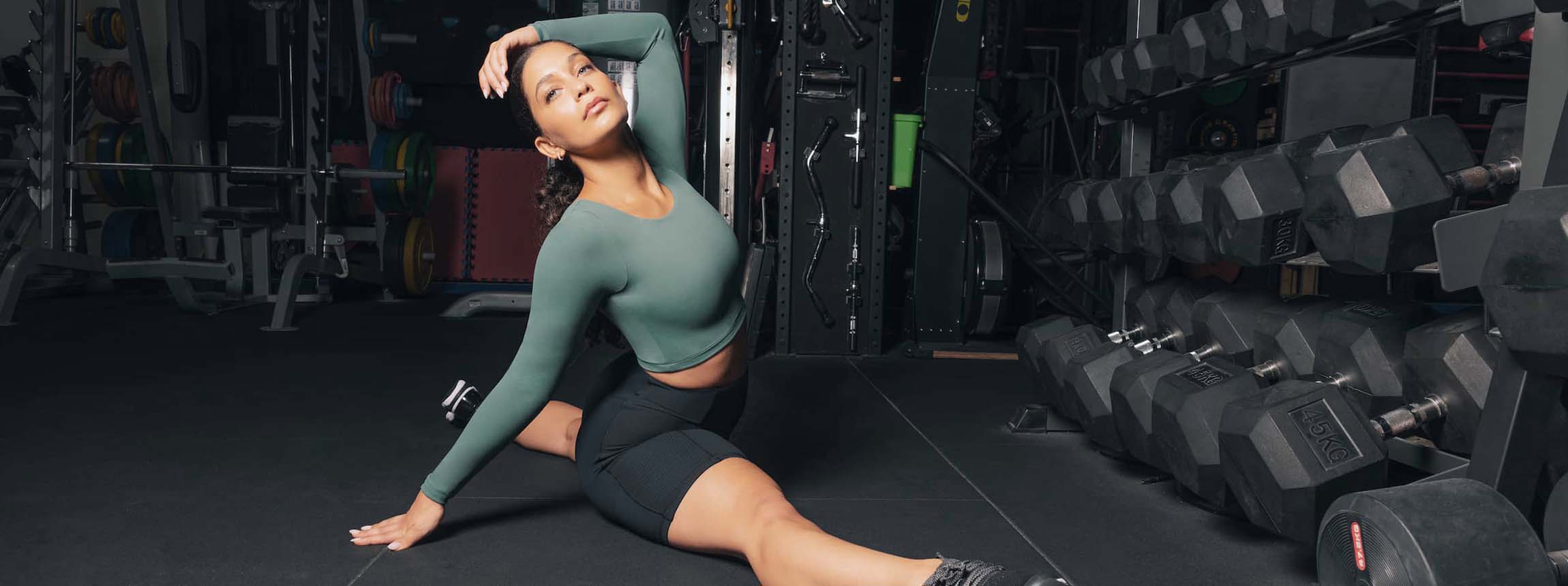From squats to running, fitness experts have revealed the five most common exercises they see done wrong, which can result in severe back pain, shoulder injuries, neck strain and shin splits.
To help you get the most from your workout and avoid injuries, experts at BLOCH have worked with physical therapists and personal trainers.
They’ve uncovered the five exercises people most often get wrong in the gym, the impact it can have on your body over time, and how to get them right:
- Rounding the back during squats
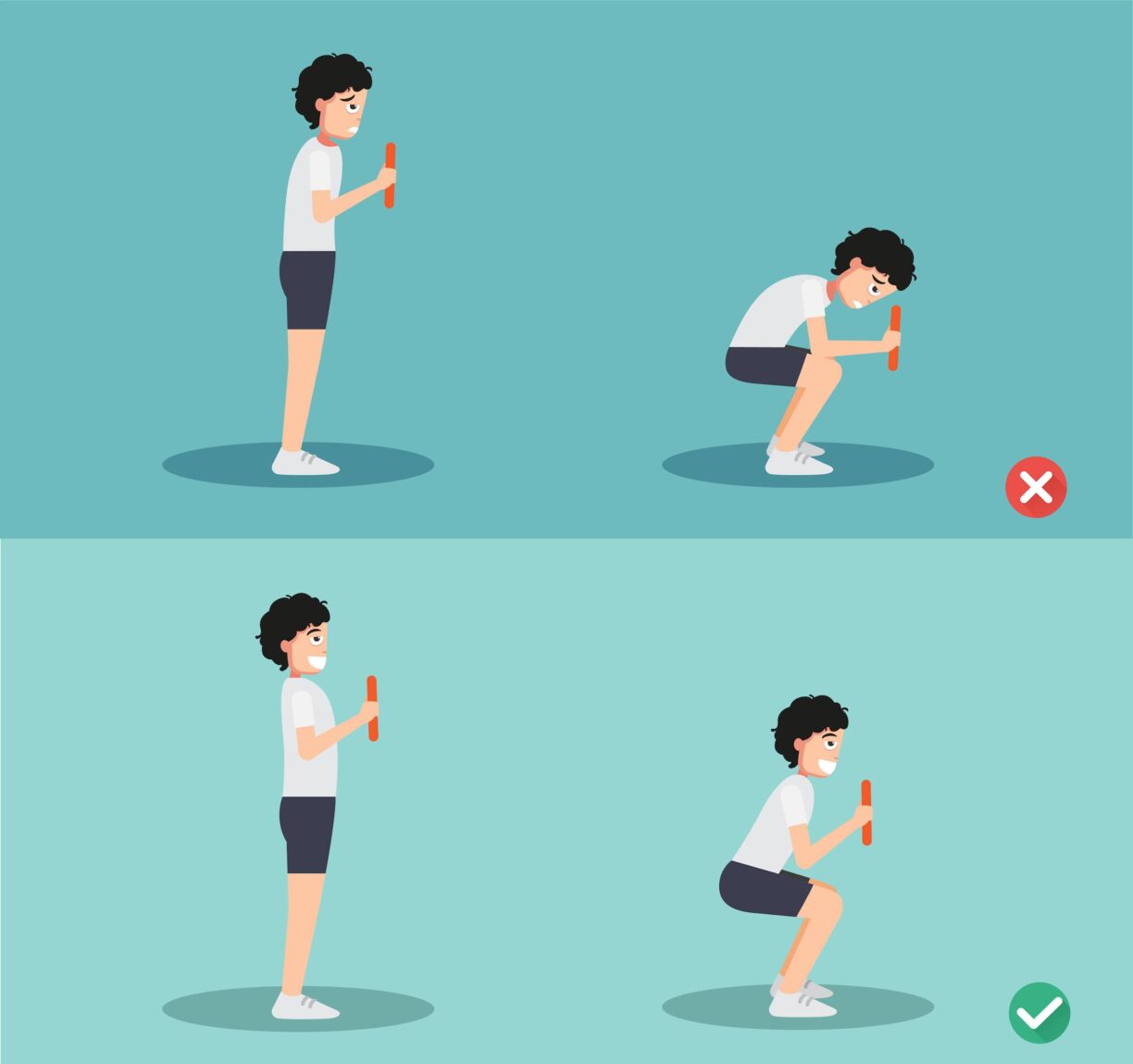
One of the top exercises highlighted by experts for incorrect form is squatting. Laura Kummerle, PT, DPT, OCS, is a Doctor of Physical Therapy.
She explains, “If the back is rounding or overly arching during a squat, it can increase stress on the low back. If the knees fall inward, it can impact the hip, knees, and ankles.”
Dr Kummerle recommends, “Make sure your back stays flat and you’re sitting the hips back to perform the perfect squat. You can modify the depth, so the back doesn’t round as you learn the movement pattern.
Make sure the knees stay in line with your second toe. If you’re having trouble with this, think about corkscrewing your feet into the ground, or you can place a band around the knees and push out into the band.”
- Flaring the shoulders during a bench press
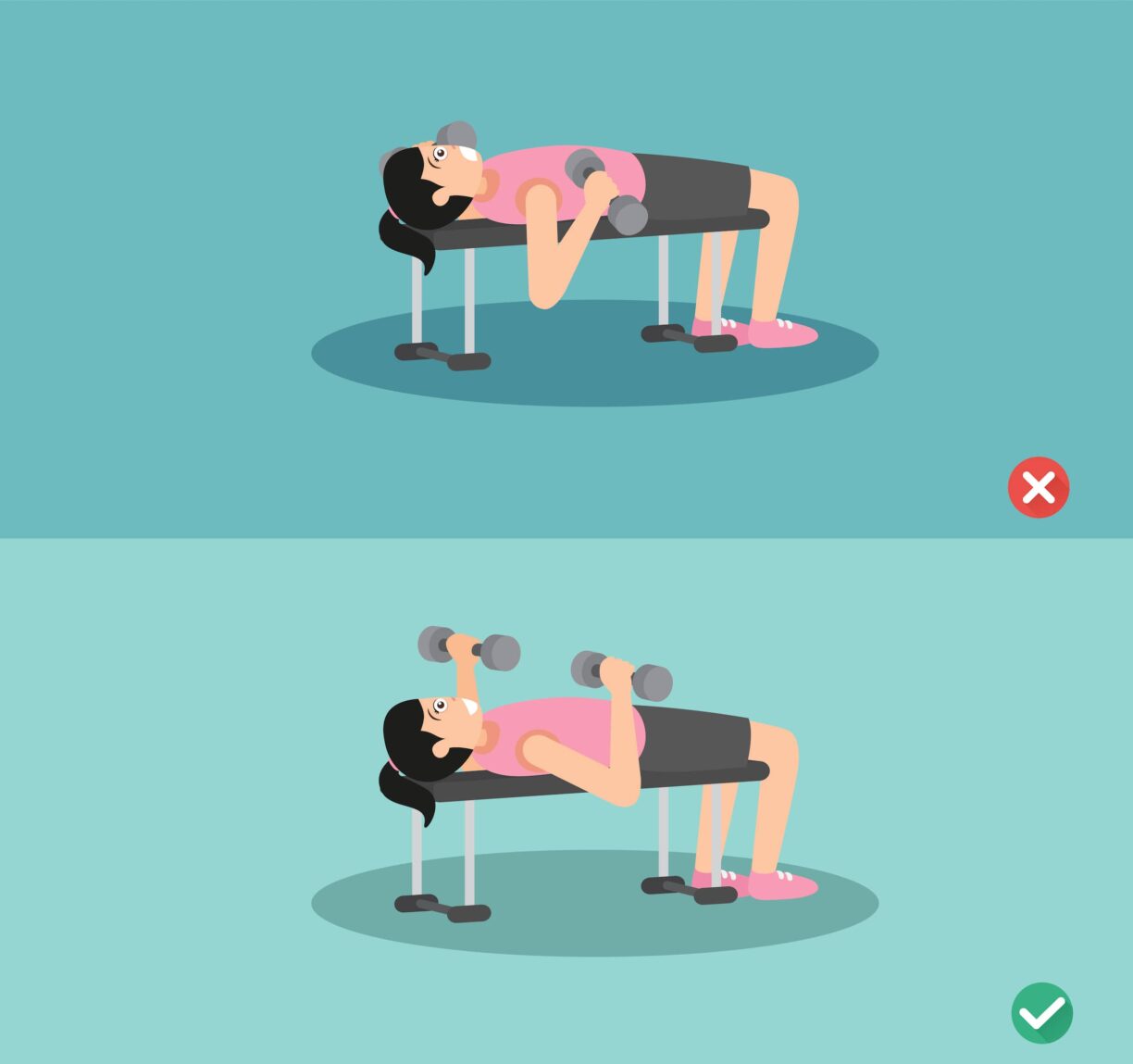
The second movement Dr Kummerle says to be careful of is the bench press. She says, “Flaring your elbows out to the side [during a bench press] places increased stress on the shoulders. This can lead to shoulder injuries over time when performed with excessive loads.”
During a correct bench press, Dr Kummerle explains, “Elbows should be about 30 to 45 degrees out to the side. [You should] bring the bar down to the bottom of your sternum or chest plate.”
- Using incorrect form during a deadlift or hip hinge
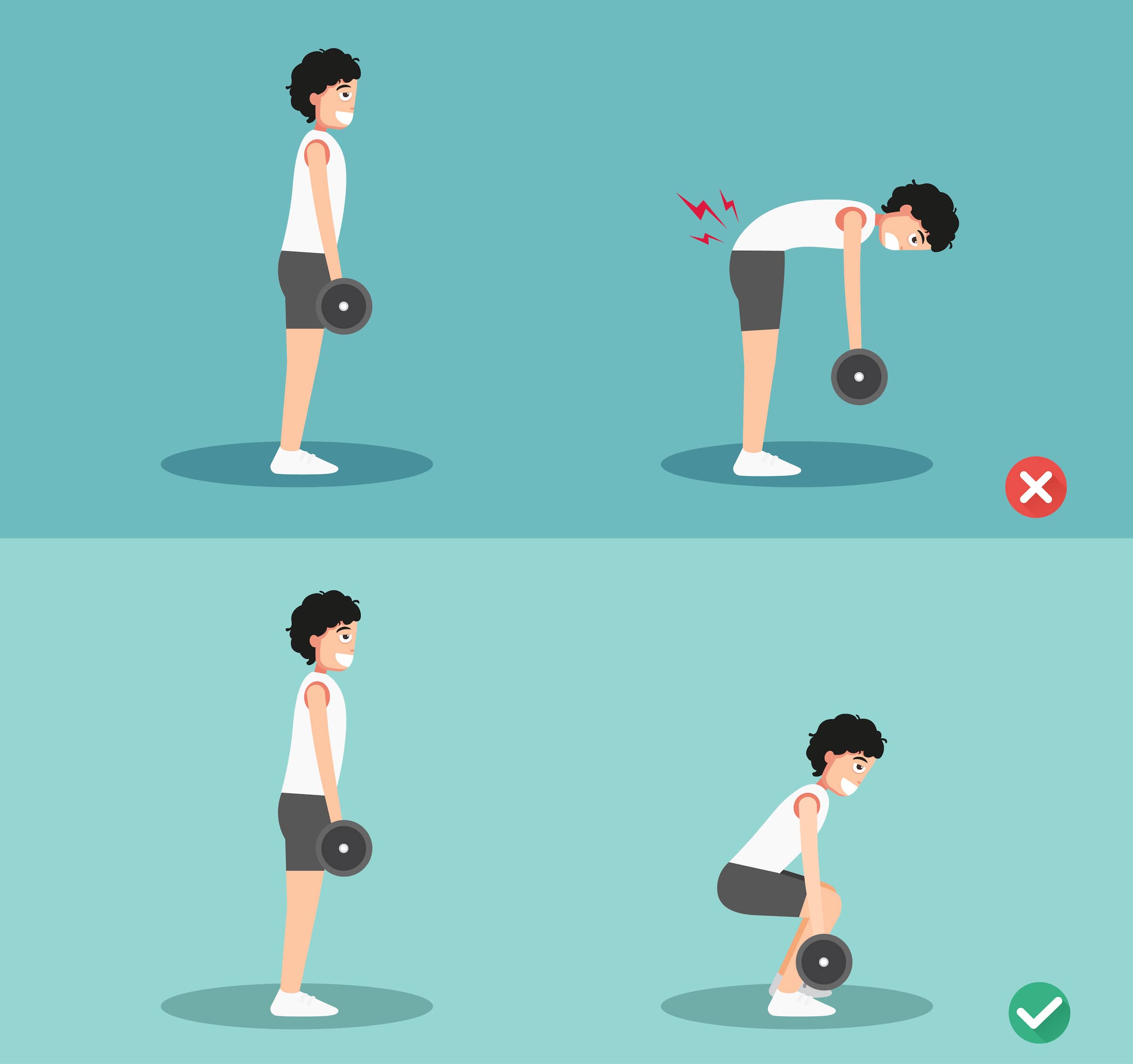
Deadlifts, or hip hinges, are another popular movement often performed incorrectly. Dr Kummerle warns, “Allowing the back to round [during this movement] can increase stress on the lower back, and performing more of a squat will bias other muscle groups.
If this happens over time, it can contribute to weakness in the posterior chain [like the] glutes and hamstrings, which can impact how you’re moving overall.”
To get it right, Dr Kummerle says, “Keep the back flat and pinch the shoulder blades slightly down to engage the lats. Depending on the type of deadlift or hip hinge variation you’re doing, you may need to keep an even straighter leg, but make sure the majority of the motion is coming from the hips and not the knees.”
- Leading with the shoulders when rowing
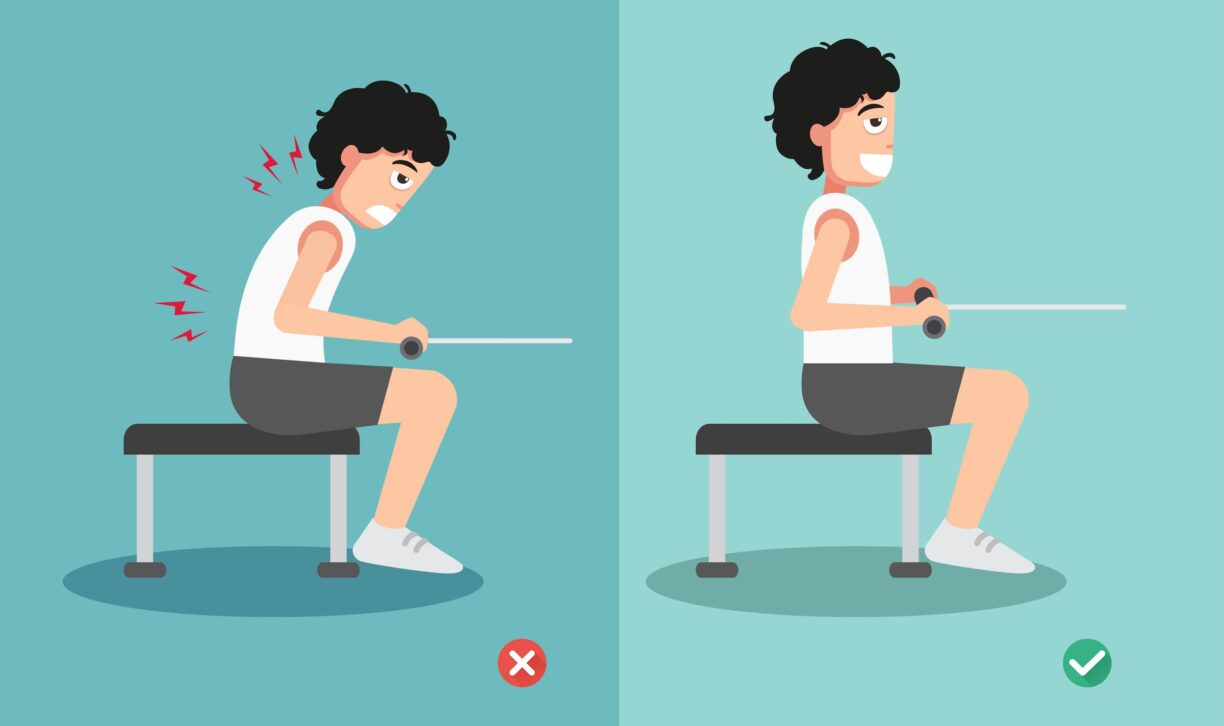
Known as “The Rowing Doc,” Amanda Diver, PT, DPT, started her business because she often saw the rowing machine being misused. She says, “One of the most common mistakes seen on the rowing machine is leading with the shoulders or head.
Instead of starting with the legs, people push their heads and shoulders back before straightening their legs. This does a couple of things. It breaks the rowing movement up so that less of the power comes from the legs, and it adds extra strain to the neck and back.”
To row correctly, you should, “Try something called a Top Quart Drill or Legs-Only Drill. This puts the emphasis on the legs, ensures that the shoulders and neck are not overused, and allows the legs to do most of the force production for the movement. Doing this drill about ten times at the beginning of a rowing session can be very beneficial over time.”
- Overstriding when running
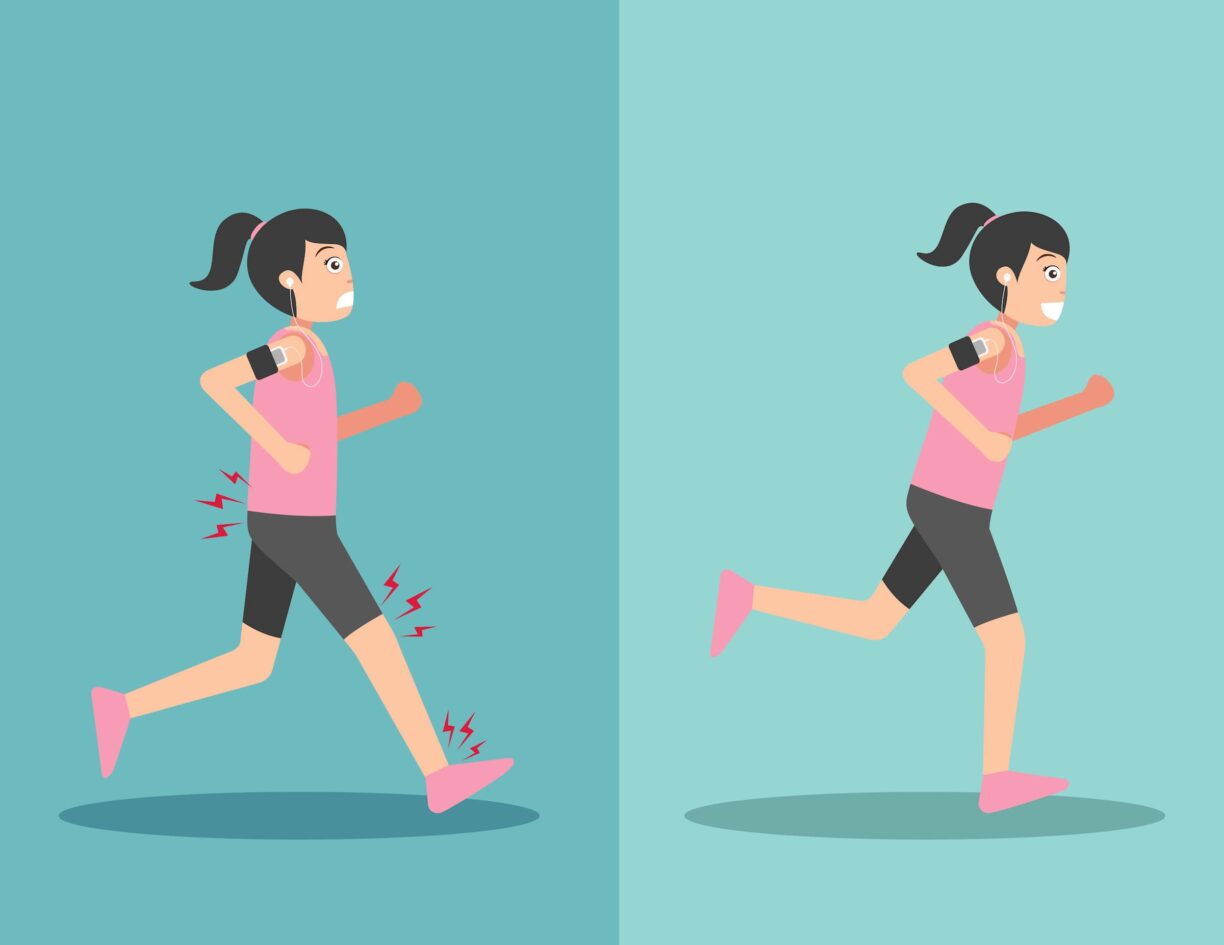
Running, whether outside or on a treadmill, isn’t an exercise people often associate with form and technique – but getting it wrong can have serious consequences.
Fitness instructor and CEO of Sports & Fitness Exchange, Josh Petrawski, explains, “Running with improper form can place excessive stress on the joints and lead to injuries. One common mistake is overstriding, where the foot lands too far before the body, causing a braking effect.
This can lead to knee and hip pain. Another mistake is running with a heavy heel strike, which can increase the impact on joints and potentially lead to issues like shin splints.”
He recommends, “To improve running form, focus on landing with a midfoot strike, maintaining an upright posture, and keeping a short stride length.
Gradually increasing mileage and incorporating strength and mobility exercises specific to running can also help prevent injuries.”
Working on your mobility and flexibility through stretching is a great way to improve your overall movement quality and keep you safe from the risk of injury.
To work on your dynamic stretching routine, visit BLOCH’s blog.
